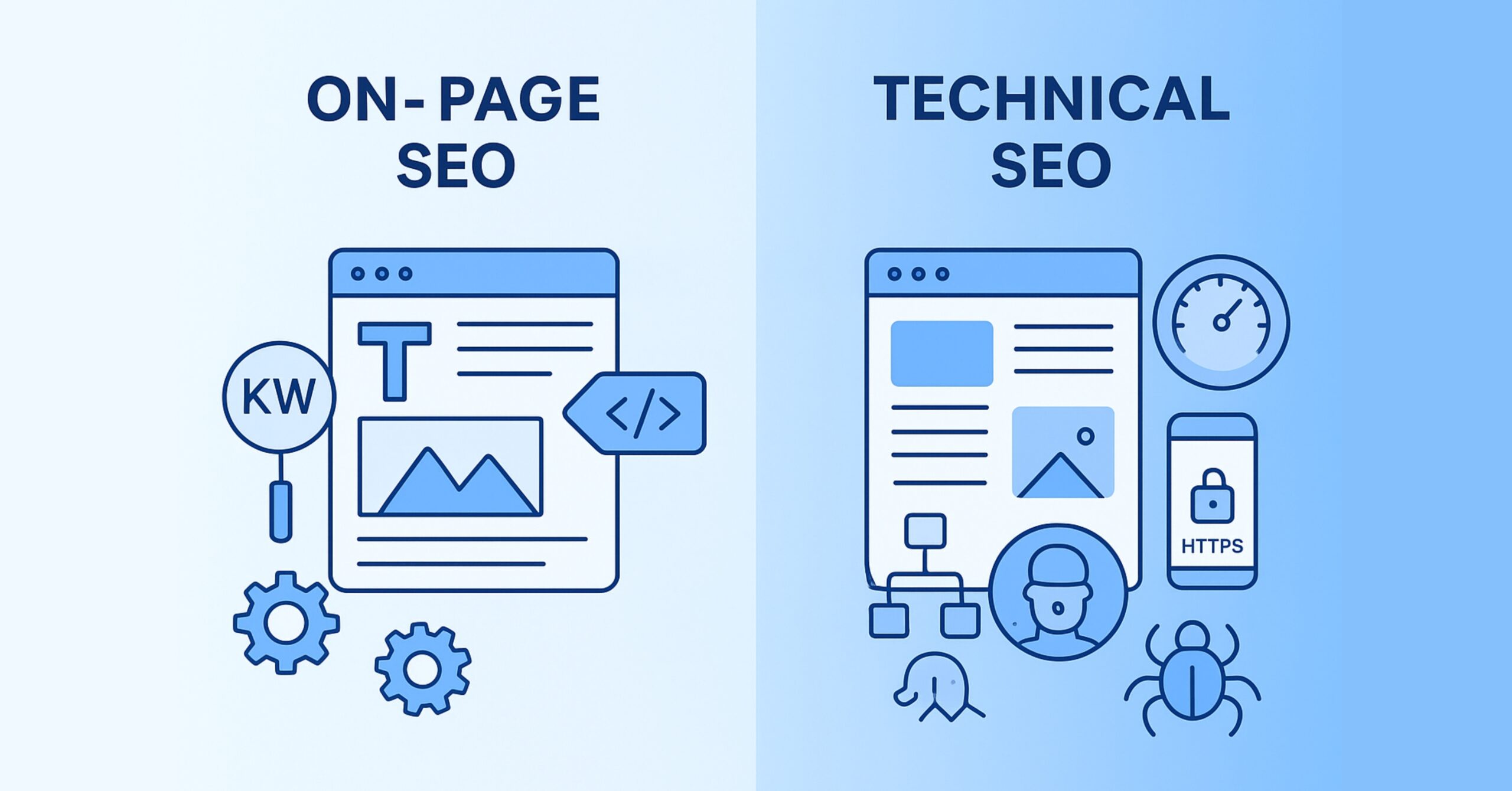In the world of digital marketing, Search Engine Optimization (SEO) holds the key to online visibility and organic traffic growth. Within SEO, two critical pillars emerge: On-Page SEO and Technical SEO. These domains play a vital role in boosting your website’s search engine rankings. In this comprehensive guide, we’ll dive into the specifics of On-Page SEO and Technical SEO, uncovering their unique roles, importance, and best practices, while incorporating popular keywords to connect with your audience.
Understanding On-Page SEO: On-Page SEO focuses on optimizing content and elements directly present on your website’s pages. This strategy aims to create pages that are both user-friendly and search engine-friendly. Let’s explore the key aspects of On-Page SEO:
- Keyword Integration: Effective On-Page SEO starts with thorough keyword research. Incorporating relevant high-volume keywords into your content, headings, meta titles, and descriptions helps search engines understand your content’s relevance.
- Content Quality: Crafting high-quality, engaging content tailored to your audience’s needs is crucial. Incorporate your target keywords naturally to maintain a cohesive narrative.
- Meta Tags and Descriptions: Well-crafted meta tags and descriptions improve click-through rates and provide context to search engines. Including primary keywords in these components enhances content understanding.
- URL Structure: Clear, descriptive URLs enhance user and search engine comprehension. A concise and coherent URL structure aids in indexing and retrieval.
- Image Optimization: Images enhance user engagement. Optimize images with descriptive alt text, optimized file sizes, and quick loading times to improve the overall user experience.
Exploring Technical SEO: Technical SEO focuses on optimizing your website’s technical infrastructure to ensure effective crawling, indexing, and comprehension by search engines. Key elements of Technical SEO include:
- Site Speed: Fast loading times are essential for user satisfaction and search engine ranking. Reduce HTTP requests, leverage browser caching, and optimize images to enhance site speed.
- Mobile-Friendliness: With mobile browsing on the rise, ensuring your website is mobile-friendly is crucial. Implement responsive design and seamless mobile navigation to cater to diverse devices.
- Crawlability and Indexability: Search engines must navigate your site effectively. Create a clear sitemap and robots.txt file to guide crawlers while using canonical tags to manage indexation and eliminate duplicate content.
- Structured Data Markup: Implement structured data (Schema markup) to provide detailed information to search engines. This can improve search result displays and potentially increase click-through rates.
- Secure HTTPS Protocol: Secure websites are favored by search engines. Transition to HTTPS to encrypt user data and enhance website credibility.
- Technical Auditing: Regular audits identify and fix issues hindering search engine crawlers. Address broken links, duplicate content, and crawl errors promptly.
Harmonizing On-Page SEO and Technical SEO: The synergy between On-Page SEO and Technical SEO is crucial. On-Page SEO shapes content and relevance, while Technical SEO ensures pages are accessible, comprehensible, and quickly indexed. Balancing these strategies enhances search engine rankings and user experience.
Conclusion: Mastery of both On-Page SEO and Technical SEO is vital in the competitive digital landscape. On-Page SEO caters to human consumption, while Technical SEO optimizes for algorithmic understanding. Integrating the best practices of both approaches creates a path to search engine success.



